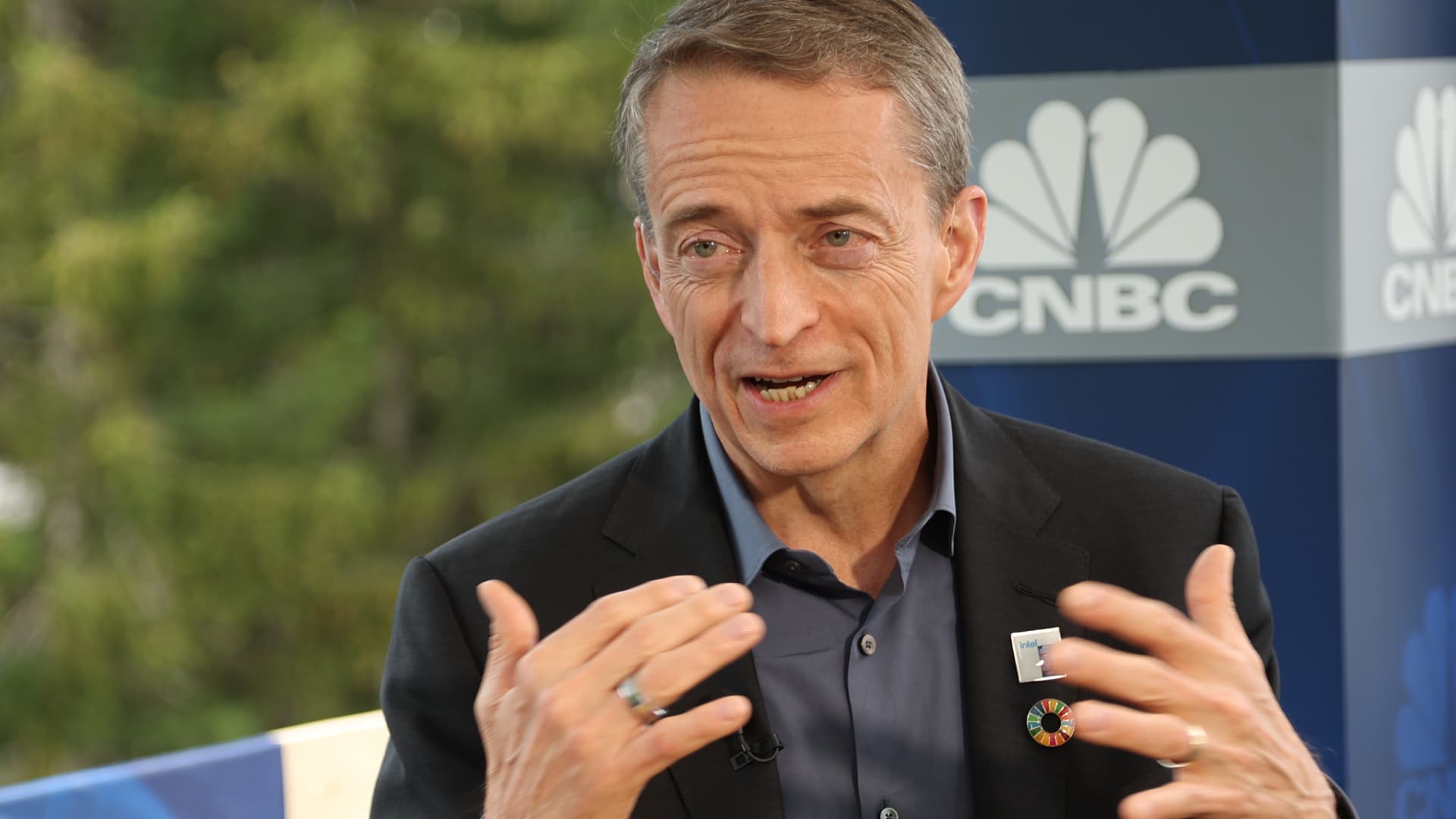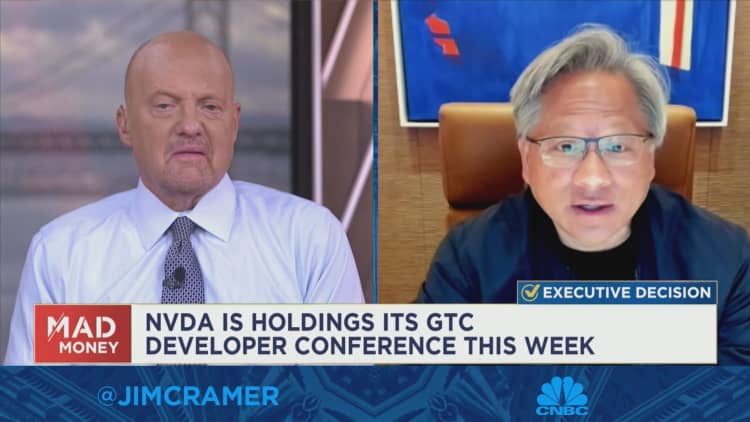
Patrick Gelsinger, Intel CEO, at the WEF in Davos, Switzerland on May 23rd. 2022.
Adam Galica | CNBC
Two of the most important American semiconductor companies disagree about the pace of chip advancements and whether Moore’s Law still applies.
Intel CEO Pat Gelsinger said on Tuesday at a company launch event that Moore’s Law, a rule of thumb from Intel’s founder dating back to the 1960s, is “alive and well.” The theory, posited by Gordon Moore, implies that chips will continue to get faster and cheaper at a predictable rate.
Nvidia, which is now about three times more valuable than Intel, is preaching a very different message. Co-founder and CEO Jensen Huang said last week that Moore’s Law has ended.
“The method of using brute force transistors and the advances of Moore’s law has largely ran its course,” Huang told investors after unveiling new products.
The divergence underscores the stark contrast between Intel and other American semiconductor companies. Intel has committed to continue manufacturing some of its chips, while Nvidia and others rely primarily on third-party foundries outside of the U.S.
Moore’s Law specifically refers to the number of transistors on a chip, which Moore said would double every other year, enhancing processing power. To increase the number of transistors on a chip, they have to be made smaller, requiring advancements in manufacturing technology.
For years, Intel was the leader in semiconductor manufacturing technology and consistently made chips with the densest transistors in the world. But in recent years, Intel has been surpassed by Taiwan Semiconductor Manufacturing Company and Samsung, which can currently produce processors with 5-nanometer transistors, while Intel is still stuck on 10-nanometer and 7-nanometer technologies.

One of Intel’s core corporate goals under Gelsinger is to get back to “performance leadership,” which means that its chips need to be as fast and efficient as chips made by rivals at third-party foundries. Intel wants to advance its manufacturing five “nodes,” or five transistor sizes, in four years to catch up, while introducing a new node with smaller transistors historically takes two years.
Intel needs Moore’s Law to persist, because the company is still actively trying to cram more transistors onto a single chip.
But size has its limitations, because at some point transistors get so small that they run into a physics problem. On Tuesday, Gelsinger called that a “day of reckoning.”
Gelsinger said that Intel is working on manufacturing advances such as new lithography techniques and RibbonFET architecture that would allow the company to continue to cram more transistors on each chip even as they get small enough to be measured in angstroms, or a unit equal to one hundred-millionth of a centimeter.
“We aspire from today, about 100 billion transistors on a single package. By the end of the decade, a trillion transistors in a single package,” Gelsinger said, “We are on schedule.”
‘The path forward’
Nvidia’s newest processors are manufactured by TSMC, which currently has the most advanced semiconductor manufacturing techniques and is the world’s largest chipmaker. Nvidia designs chips but worries less about the manufacturing side.
Rather than Moore’s Law, Nvidia’s answer to the engineering challenge of creating smaller transistors is a concept that Huang calls “accelerated computing.” In his vision, intense applications like artificial intelligence can run on the specific processor that handles them the best, which would be the graphics processor that Nvidia develops. In other words, there’s less need for Intel’s specialty.
“Going forward, the opportunities for continuing to ride the price performance curve of Moore’s law has ended,” Huang said. “So if you want to be able to do larger-scale computing and to do it in a cost-effective way, after 15 years — almost 20 years — of pursuing accelerated computing, I think that, very broadly, almost it’s conventional wisdom that accelerated computing is really the path forward.”
Intel announced new chips and software on Tuesday as it attempts to bounce back from years of slipping performance and profits. Over the past five years, Intel’s stock has lost 28% of its value, while Nvidia’s stock price is up over 180% (even after dropping 58% in 2022).
Intel announced new Core desktop processors for gamers and consumers with improved performance, a graphics chip for data centers called Ponte Vecchio and software called Unison that enables Windows PCs to pair with Android phones and iPhones to send texts and make calls.

